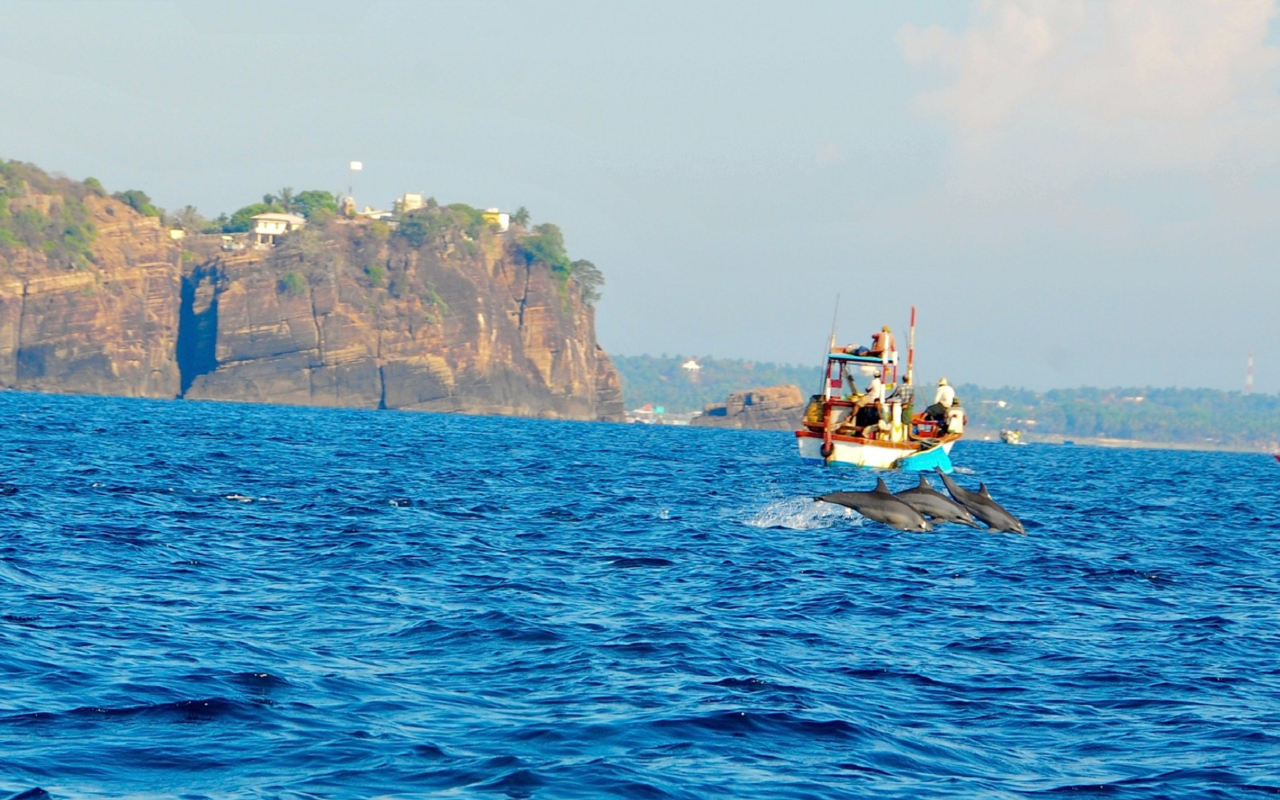For some, spotting a Blue Whale is a dream come true. Witnessing these extraordinary creatures breaching and diving underwater is a remarkable spectacle, limited to only certain parts of the world. Sri Lanka is one of the best places in the world for whale watching. Thanks to its warm, plankton-rich waters and deep-sea drop-offs just a few miles from the coast, the island is a prime feeding and migration zone for these majestic ocean giants.
Why Responsible Whale-Watching Matters?
When observing wildlife, whether on land or water, it is essential to do so without disturbing or distressing them or damaging their habitats and ways of life. Blue Lanka Tours is a staunch advocate of wildlife well-being and ecosystem preservation. We curate tours and choose service providers based on our sustainable policy. Responsible whale-watching can minimise human impact and help us conscientiously enjoy these incredible encounters. Let’s look at the best practices for responsible whale-watching.
Whale watching in Sri Lanka comes under the Sea Mammals (Observation, Regulation, and Control) Regulations of 2012, which outline the licensing requirements for tour operators, focusing on passenger safety and vessel compliance. These regulations minimise disturbance while observing them.
Choosing a Responsible Whale-Watching Tour Operator
Look for the Following Criteria:
- Licensed and certified by Sri Lanka Tourism. You can also choose Sri Lanka Navy whale-watching tours.
- Follows international whale-watching guidelines (e.g., Whale and Dolphin Conservation Society – WDC)
- All authorised vessels must have a licensed guide on board.
- Uses boats with low noise levels to minimise disturbance
- When approaching marine mammals, boats must gradually reduce speed and maintain a minimum distance of 400 meters before getting closer to sightings.
- Maintains a safe distance (at least 100 meters from whales)
- When within 100 meters of whales, engines must switch off, and vessels must never come closer than this limit.
- Maintaining a minimum approach distance of 50 metres for dolphins and other marine mammals
- Boats must avoid sudden changes in speed or direction and should never cross in front of or behind marine mammals. Blocking their natural movement or migration routes is strictly prohibited.
- Limits the number of vessels per sighting
- Educates guests on marine conservation
Best Practices for Responsible Whale Watching
Before the Trip:
- Choose a tour operator that prioritises sustainability
- Wear reef-safe sunscreen to prevent pollution
- Avoid plastic waste by bringing reusable water bottles and bags
During the Trip:
- Keep a safe distance from whales and dolphins.
- Do not attempt to touch, feed, or swim with marine animals.
- Do not discard items into the ocean. These pose a hazardous threat to marine life if ingested or tangled in.
- Passengers should never use food, sound, or light to lure whales and dolphins.
- Passengers must not enter the water or engage in any activity that could disturb or harm the animals. Diving is permitted only under special conditions with official approval.
- Reduce noise by speaking quietly and turning off flash photography.
- Follow the guide’s instructions and respect marine life.
After the Trip:
- Support marine conservation efforts through donations or volunteer programs
- Share your experience responsibly to promote ethical tourism
- Avoid purchasing products made from marine animals
Conservation Efforts and How You Can Help
Key Organisations Supporting Marine Conservation:
- The Sri Lanka Marine Mammal Conservation (SLMMC)
- The Centre for Research on Indian Ocean Marine Mammals (CRIOMM)
- Whale and Dolphin Conservation (WDC)
How You Can Contribute:
- Participate in science programs by reporting whale sightings
- Support sustainable tourism businesses
- Spread awareness about responsible whale-watching
Best Locations for Whale Watching in Sri Lanka
The island’s three main whale and dolphin-watching spots are Mirissa in the south, Trincomalee in the northeast and Kalpitiya on the northwest coast. Sri Lanka offers year-round opportunities for whale-watching.
Mirissa
- The most popular whale-watching destination in Sri Lanka
- Best time: November to April
- Species: Blue whales, sperm whales, Bryde’s whales, fin whales and dolphins
Trincomalee
- Located on the northeast coast, known for deep waters close to shore
- Best time: May to October
- Species: Blue whales, sperm whales, dolphins
Kalpitiya
- Famous for large pods of dolphins and whale sightings
- Best time: December to April
- Species: Sperm whales, blue whales, minke whales, melon-headed whales, dwarf sperm whales, pilot whales and dolphins
Responsible Whale-Watching Adventures with Blue Lanka Tours
Being conscious of the well-being of these incredible creatures is a responsibility we must not brush aside. Responsible whale watching supports marine conservation efforts, promotes sustainable tourism, and raises awareness about the need to protect ocean ecosystems. Choosing an eco-friendly tour operator and following best practices ensure these giant marine mammals will continue to amaze future generations.
We at Blue Lanka Tours are committed to animal welfare and responsible tourism. While we ensure your travels with us give you every satisfaction, we also ensure they do not negatively impact natural environments, cultural traditions and local communities. Explore Sri Lanka’s rich marine biodiversity and witness the largest of Earth’s creatures thriving in its waters with our tailor-made travels.
slot gacor 2025
slot server thailand
toto slot
slot gacor 4d
toto slot 4d

